New Fashion Women's Clothing Biography
Source(google.com.pk)The Impact of World War II on Fashion
One might say that women's fashions of the 1940s were dictated by Adolph Hitler. The German invasion of Poland in September 1939 set the tone for everything that happened in the next decade. And as fashion follows social trends and the events of the world economy, World War II necessitated changes in clothing styles and fashion design.
Pearl Harbor was bombed on December 7, 1941 by which time Germany had invaded Norway, Denmark, Holland, Belgium, France, Yugoslavia, and Greece. The world was at war and haute couture took a back seat to the privations of global conflict.
It may be hard for young people today to visualize the impact of World War II on the day to day lives of women in America and much of the rest of the world. Without going too much into the suffering wrought by a world at war, suffice it to say that the war effected everything, even for those living in countries where the was not actually fought. The whole world changed and so did ladies' fashions!
Every woman in the USA knew enlisted men. The American military effected clothing styles in the US and many women's garments took on a military look that underscored the significance of the war. Women everywhere had to make do with less.
Source
The Effect of the War on Women's Fashion
In order to supply the war effort, fabric was rationed. Nylon and wool were both needed by the military and Japanese silk was banned in the USA after the attack on Pearl Harbor. Rayon, the new synthetic fabric developed in the 1930s became the material most often used for the creation of ladies' clothing during the War.
By June 1941, with Britain under attack by the Nazis, cloth rationing resulted in a coupon system. Adults in Britain received 66 clothing coupons per year, reduced to 36 coupons by 1945. Supplies were limited and prices were high. Many governments placed restrictions on the use of fabrics and other materials used to make clothing as they were needed by the military.
While London was bombed, people also feared a gas attack as the Germans had used gas against the Allies in World War I. London's Harvey Nichols fashionable store offered gas protection suits of pure oiled silk in a variety of colors. Many women owned Utility Jumpsuits which one could put on quickly when the sirens blew. The jumpsuit, a new innovation, was warm and comfortable and featured pockets for papers and valuables.
Source
Paris Lost It's Influence Over Fashion
Paris lost its leadership role in the world of fashion. Couture houses that were still open drew disapproval from people in the Allied countries who resented the fact that some of the top designers appeared to work in cooperation with occupational forces. And when the rest of the world was scrimping, Paris offered superfluous use of fabrics, including cuffs, dolmen sleeves, nonfunctional buttons, draped fabric, and pocket flaps.
Coco Chanel, the famous fashion designer, closed down her fashion studio during the war years but was sharply criticized for her relationship with a high ranking Nazi official. Chanel also supported the detested Vichy regime and called the French Resistance criminals.
Paris did, however, come up with one interesting mode of showing their clothing: Le Theatre de la Mode, or the Theater of Fashion which compromised 200 two foot tall dolls dressed in Parisian designed clothing.
What with the hardships of war and general disapproval of Paris, the fashion industry moved to New York with the American look.
Claire McCardell, for example, made use of fabrics that were not in demand by the military. Materials like cotton denim, jersey, striped mattress ticking, gingham, and calico were functional and comfortable and shown for every day wear.
"War wise" dressing became the fashion trend with both drab and patriotic colors like air force blue, cadet blue, flag red, black, browns, greens, tan, and gray flannel.
As wool was used for soldiers' blankets, fabric designers came up with wool blends made of recycled wool and rayon.
Rayon was the fabric of choice. It was versatile; did not shrink or crease, and could be produced in either light or heavy weights.
Utility Dress - Less Fabric Used for Women's Dresses During World War II
Source
Fashion in the 1940s - Fabric Restrictions Put a New Emphisis on Legs
The actress Paulette Goddard
The actress Paulette Goddard | Source
Hemlines Went Up
Both Britain and the United States put official restrictions on the use of the materials used in the production of garments. The L-85 Order specified the amount of fabric that could be used to create a garment. Hems rose with fabric restrictions. The order also restricted the number of pleats and trimmings as well as jacket and trouser lengths. The metal used for zippers was needed by the military and buttons were limited - useful only, not for ornamentation.
Women brought up during the austerity of the Great depression made do by recycling, making coats and jackets out of old blankets. Winter wear moved away from the use of wool and incorporated velveteen and corduroy for cold weather suits and dresses.
Less fabric meant lean styles, with narrow hip lines and a trim over all appearance. Short and boxy was the fashion style of the day, out of necessity.
Oddly enough, sequins, unnecessary for the war effort, popped up n sweaters to add a note of glitz. And although Hollywood still depicted glamorous stars, the female stars portrayed a new kind of elegance. In the 1945 movie Mildred Pierce, Joan Crawford appears as a struggling single mother who dresses for success in attractive yet rather severe styles. The beautiful Lauren Bacall, in The Big Sleep (1946) appears sexy and glamorous in slacks and many fashion designs of the day.
Shorter skirts placed an emphasis on women's legs. Legs were 'in,' and the famous pin-up of Betty Grable looking over her shoulder in a swim suit is a great example of the importance of legs.
Simple Design of 1940s
Simple yet attractive dress of the period used 7 ration coupons
Simple yet attractive dress of the period used 7 ration coupons | Source
The New 2 Piece Swim Suit - 1945
Source
Women in the 1940s - Fabric Restrictions Meant Short Skirts
Source
Other Fashion Aspects of the 1940s
Hair was worn long and curled at the ends for a soft, feminine look. Beauty salons can be expensive and women saved money by having their hair cut less often. As so many women enlisted in the military or took factory jobs, it was easy to tie long hair back for safety. Then, the long hair could be worn down for casual or dress occasions.Women often knit or crocheted snoods which were an attractive combination of a hair net and a veil.
Girdles were out as the rubber was needed for the war effort. Skirts and dresses were often fitted with adjustable waistlines. But it wasn't hard to be thin when food was rationed.
The fabric used in the manufacturer of swim suits was also reduced causing the disappearance of the little skirt flap so popular on one piece suits. Fabric reduction was responsible for bare midriffs and the introduction of the 2 piece swim suit. The bikini made its debut in 1946.
Shoe heels were lower and shoe designers thought to add interest with the introduction of the wedge shoe. Many women wore flat heeled shoes for safety and comfort in the workplace. T-straps and open toed shoes looked lovely and saved on shoe leather.
Pants became a staple of women who worked in factories and soon gained widespread acceptance for casual wear and for work at home in the garden. The actress Katherine Hepburn helped make trousers a popular garment for women as she appeared in several movies wearing elegant, wide legged trousers.
Stockings formerly made of silk were made out of nylon but when the military began to use nylon, many women used tan make up on their legs and drew a line up the back to simulate seams. Bobby socks became popular among the younger set.
Shoulder pads became popular to highlight the masculine, military look. They also added an interest to the shape of the slim silhouette.
Corsages made of fresh flowers like orchids and gardinias were worn to snazz up a plain black dress. Many women also owned corsages made of artificial flowers or gathered netting.
Tropical Prints Popped Up in Clothing as Well As in Home Décor Fabrics Like This Tropical Print Barkcloth
Source
After the War
The end of World War II did not immediately change the fashion industry. Clothing rations and fabric restrictions endured some time after as the economy changed slowly from a war economy toward peace.
A new world consciousness emerged as Americans became aware of other places. Tropical prints became popular and featured exotic florals such as palm fronds and hibiscus blooms.
The colors and styles of Mexico and Latin America brought new colors like terra-cotta and turquoise to women who craved brightness and fun. Peasant blouses and skirts offered a soft, cool femininity for warm weather inspired by the popular artist Frida Kahlo.
The New Look - An Hour Glass Figure
Source
The New Look
In February of 1947, Christian Dior introduced his New Look, a style that shocked and outrages some and thrilled others.
Hemlines were long in skirts and dresses with tons of fabric. Wide hats and tight nipped in waistlines gave women an almost antebellum look. The new female silhouette gave women an hour glass figure and a new, feminine extravagance so long denied.
The copious amounts of fabric used for skirts was viewed by many women as an insult to those still suffering the restrictions and effects of the war. Few women could afford the glamorous New Look when they could barely afford to put food on the table. Some saw Doir's New Look as a means to increase the profits of the textile manufacturers who backed the famous clothing designer.
Yet Dior's new silhouette was not without some approval. Sick of the privations and restrictions of war, many women found the flowing, feminine style to be very appealing and the New Look eventually won out, to influence women's fashion well into the next decade.
New Fashion Women's Clothing Latest New Fashion Salwar Kameez Collection Designs in Pakistan And India Looking hot

New Fashion Women's Clothing Latest New Fashion Salwar Kameez Collection Designs in Pakistan And India Looking hot

New Fashion Women's Clothing Latest New Fashion Salwar Kameez Collection Designs in Pakistan And India Looking hot

New Fashion Women's Clothing Latest New Fashion Salwar Kameez Collection Designs in Pakistan And India Looking hot

New Fashion Women's Clothing Latest New Fashion Salwar Kameez Collection Designs in Pakistan And India Looking hot

New Fashion Women's Clothing Latest New Fashion Salwar Kameez Collection Designs in Pakistan And India Looking hot

New Fashion Women's Clothing Latest New Fashion Salwar Kameez Collection Designs in Pakistan And India Looking hot
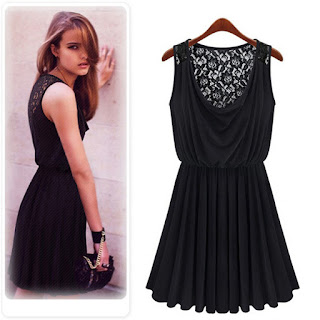
New Fashion Women's Clothing Latest New Fashion Salwar Kameez Collection Designs in Pakistan And India Looking hot

New Fashion Women's Clothing Latest New Fashion Salwar Kameez Collection Designs in Pakistan And India Looking hot
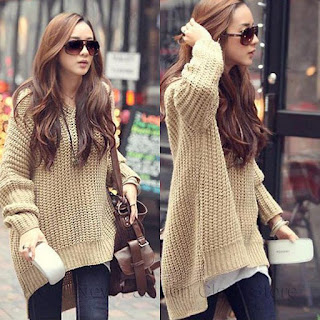
New Fashion Women's Clothing Latest New Fashion Salwar Kameez Collection Designs in Pakistan And India Looking hot

New Fashion Women's Clothing Latest New Fashion Salwar Kameez Collection Designs in Pakistan And India Looking hot

New Fashion Women's Clothing Latest New Fashion Salwar Kameez Collection Designs in Pakistan And India Looking hot

New Fashion Women's Clothing Latest New Fashion Salwar Kameez Collection Designs in Pakistan And India Looking hot
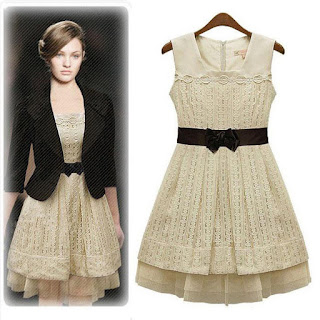
New Fashion Women's Clothing Latest New Fashion Salwar Kameez Collection Designs in Pakistan And India Looking hot

New Fashion Women's Clothing Latest New Fashion Salwar Kameez Collection Designs in Pakistan And India Looking hot

New Fashion Women's Clothing Latest New Fashion Salwar Kameez Collection Designs in Pakistan And India Looking hot

New Fashion Women's Clothing Latest New Fashion Salwar Kameez Collection Designs in Pakistan And India Looking hot

New Fashion Women's Clothing Latest New Fashion Salwar Kameez Collection Designs in Pakistan And India Looking hot

New Fashion Women's Clothing Latest New Fashion Salwar Kameez Collection Designs in Pakistan And India Looking hot

New Fashion Women's Clothing Latest New Fashion Salwar Kameez Collection Designs in Pakistan And India Looking hot

New Fashion Women's Clothing Latest New Fashion Salwar Kameez Collection Designs in Pakistan And India Looking hot

New Fashion Women's Clothing Latest New Fashion Salwar Kameez Collection Designs in Pakistan And India Looking hot

New Fashion Women's Clothing Latest New Fashion Salwar Kameez Collection Designs in Pakistan And India Looking hot

New Fashion Women's Clothing Latest New Fashion Salwar Kameez Collection Designs in Pakistan And India Looking hot

New Fashion Women's Clothing Latest New Fashion Salwar Kameez Collection Designs in Pakistan And India Looking hot

New Fashion Women's Clothing Latest New Fashion Salwar Kameez Collection Designs in Pakistan And India Looking hot

New Fashion Women's Clothing Latest New Fashion Salwar Kameez Collection Designs in Pakistan And India Looking hot


New Fashion Women's Clothing Latest New Fashion Salwar Kameez Collection Designs in Pakistan And India Looking hot

New Fashion Women's Clothing Latest New Fashion Salwar Kameez Collection Designs in Pakistan And India Looking hot

New Fashion Women's Clothing Latest New Fashion Salwar Kameez Collection Designs in Pakistan And India Looking hot
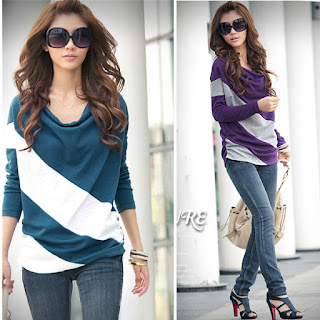
New Fashion Women's Clothing Latest New Fashion Salwar Kameez Collection Designs in Pakistan And India Looking hot

New Fashion Women's Clothing Latest New Fashion Salwar Kameez Collection Designs in Pakistan And India Looking hot

New Fashion Women's Clothing Latest New Fashion Salwar Kameez Collection Designs in Pakistan And India Looking hot
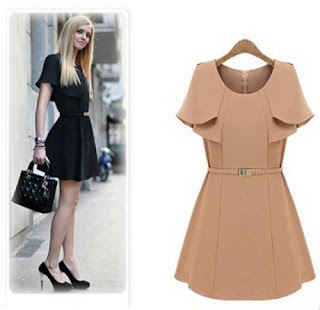
New Fashion Women's Clothing Latest New Fashion Salwar Kameez Collection Designs in Pakistan And India Looking hot

New Fashion Women's Clothing Latest New Fashion Salwar Kameez Collection Designs in Pakistan And India Looking hot
No comments:
Post a Comment